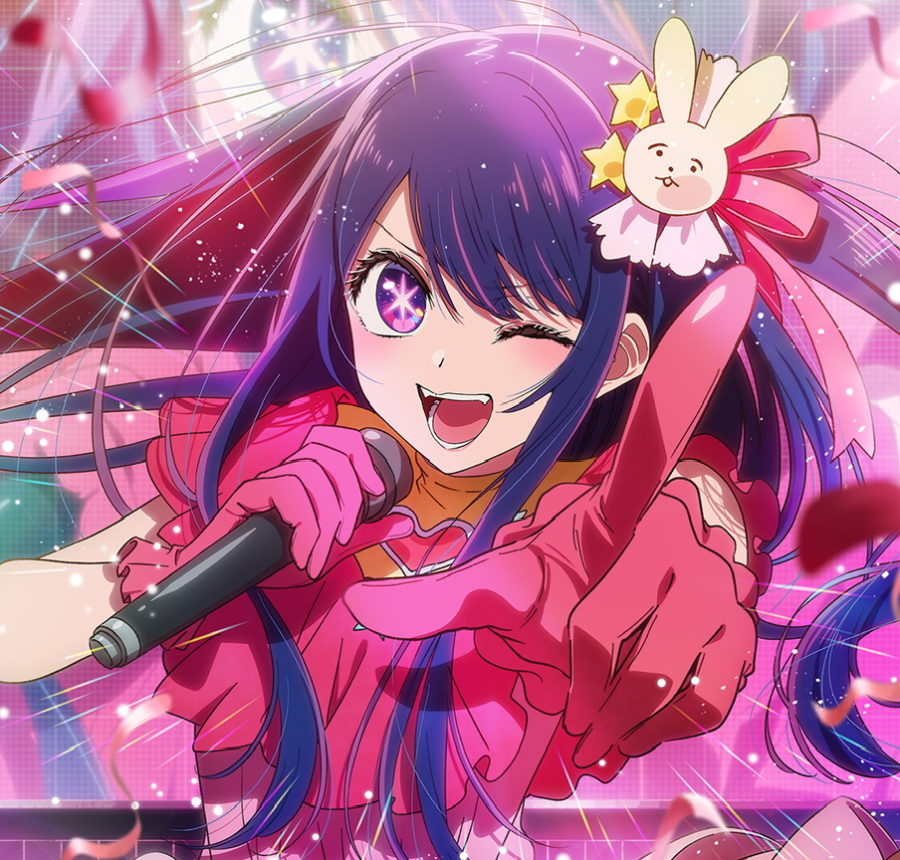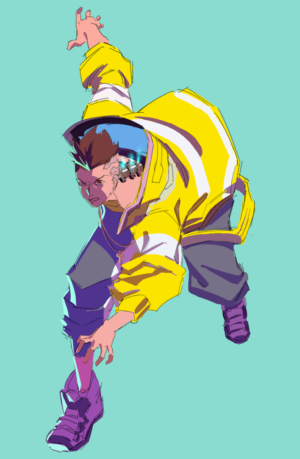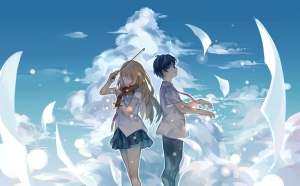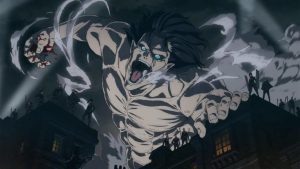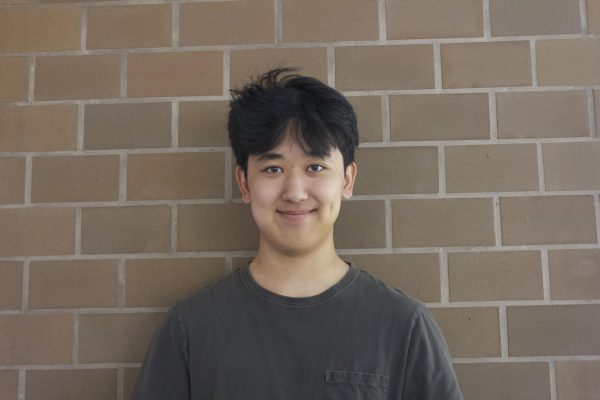“Oshi No Ko” depicts the dark side of the media industry
courtesy of Doga Kobo
Oshi No Ko explores the dark underbelly of the media industry and parasocial relationships.
May 25, 2023
This review contains major spoilers.
“Oshi No Ko,” written by Aka Akasaka, had its anime debut on Apr. 12 and immediately exploded in popularity. It reached the number one ranking on MyAnimeList, an anime cataloging website, overtaking popular shows like “Attack on Titan”, “Demon Slayer” and “My Hero Academia”. Besides being gorgeously animated, the show boasts an incredible blend of drama and mystery while exploring difficult themes in a respectful manner.
The first episode introduces the audience to a premise so intricate that it takes a whole 90 minutes to complete. The show takes place in modern Japan and follows Hoshino Ai, a 16-year-old pop idol who runs into some complications that force her into hiatus. She gets pregnant with twins, and the father is nowhere to be found. The story hooks you in with how she chooses to not have an abortion but instead to keep them as a secret from the world. Why did she choose to keep the kids? What kind of person pauses their career to have unplanned children with no father? By raising these questions, the show brings you in to discover who Hoshino Ai is and through that, discover the consequences of parasocial relationships and the exploitation of artists in the entertainment industry.
The portrayal of Ai’s experiences in her career makes viewers invested in her character while reflecting the struggles of many real-world artists today. She starts out as a minor star, making meager wages and living paycheck to paycheck despite her talent and charisma. We see her skills at work in many settings from concerts, to filming sessions to even at her practices. But the place where her character shines the most is within the live broadcasting room. At this point in the story, Ai reads a comment online that called her smile professional and fake. Discouraged by this, she goes through her next performance by going through the motions and putting on display her standard smile for the camera. But, when she catches a glimpse of her two secret children in the audience cheering her on, she instantly bursts into a smile that personifies pure joy. The animation puts the scene in slow motion, adds an extra sparkle to her eyes and masterfully displays her emotions. The same online commenter that initially put her down saw the performance and praised her smile. Hoshino’s love for her kids taught her what a genuine smile was.
Through her performances, her popularity increases and she starts to make more fans. However, despite growing success, she still worries about money because of how slim her profits are.
“Royalties are split, concerts lose money if the merchandise doesn’t sell well, thus only a select few make a million yen (~$7500) a month,” Ai says in the show. She further states she needs more money in order to raise her young children properly. Dealing with financial issues like Ai does is common among smaller artists worldwide. For example, less than 0.5% of artists on Spotify earn more than $50,000 a year – significantly less than California’s median household income of $84,097. To try and raise a family with a standard artist salary is difficult, to say the least. By including this detail, the show brings attention to the financial state of smaller artists and the experience of being in that situation.
Furthermore, the issue of parasocial relationships and their extreme consequences is shown in a plot twist of the first episode. The production foreshadows in a way that keeps the twist surprising but not jarring to the viewer. By combining its themes and excellent animation, the producers create an experience that leaves you dazed.
In the climax, Hoshino Ai is killed by a stalker who stabs her with a knife. His violence is fueled by learning that she has kids, thus “betraying” the loyalty of her fans. The stalker rants maniacally about how she “lied” to her fans and doesn’t care about them. Spit flies from his mouth while the perspective moves to loosely track his erratic movements, emphasizing just how deranged his mind is. The animation leaves no doubts about what kind of person he is and the depths of his insanity.
This scenario is not a fictional exaggeration. Often, obsessive behavior like this commonly stems from an issue that has proliferated through our culture today: the rise of parasocial relationships. A parasocial relationship is where an individual makes a one-sided relationship with an online persona or celebrity who doesn’t even know they exist. In 2016, Japanese singer and actress Mayu Tomita was stabbed in the neck and chest dozens of times by a fan after her team returned the gifts that he had sent her. It’s not just a Japanese issue, either. In 2018, Taylor Swift’s life was endangered when Julius Sandrock drove from Colorado to Swift’s home in Beverly Hills, masked and carrying a knife. He told police that he simply wanted to “meet” with Taylor Swift. Thankfully, nobody got hurt during this incident, but it put into perspective how the dangers of parasocial relationships permeate throughout the world.
Common sense states that in order to protect the artist, all measures should be taken to stop these relationships from forming. But in real life, that isn’t the case. In fact, it’s the exact opposite. By releasing as much information about their lives as possible, artists actually gain fame and money by creating ultra-dedicated fans that buy their merchandise, songs and tickets to their concerts. By releasing information about artists’ lives through Instagram, talk shows, interviews and even through paparazzi footage, they foster these relationships and create a profit. It puts artists in a dilemma for having to choose between success and safety.
“Oshi No Ko”’s first episode serves as a thought-provoking and entertaining commentary on the darker aspects of the entertainment industry, making it worth each second of its 90 minute length. The character of Hoshino Ai and her life and death prompts us to look at media, artists and ourselves through a new lens.

